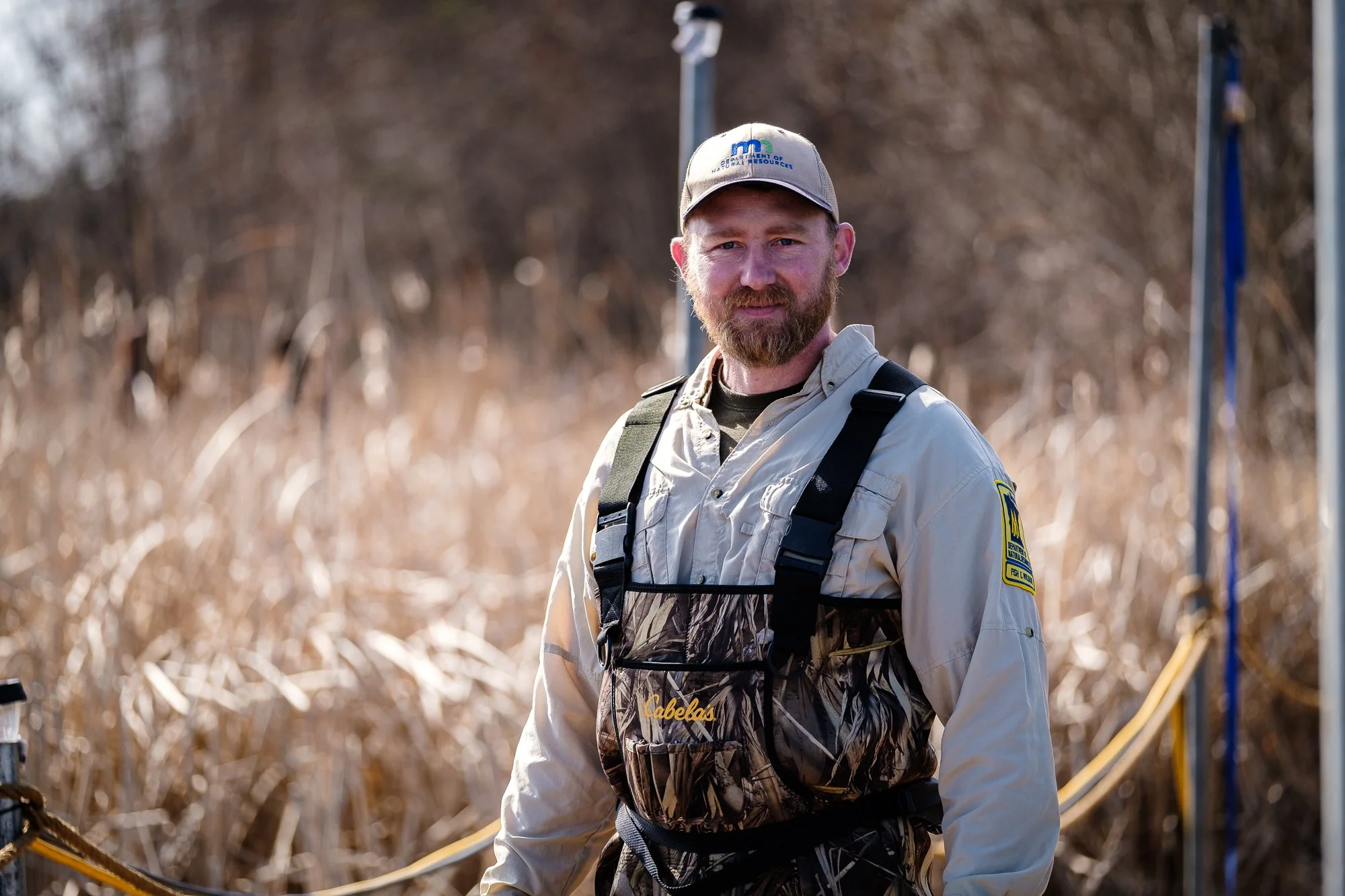At 63 degrees, surface water has cooled enough to trigger some early fall panfish movement in Cutfoot Sioux Lake.
Late summer fishing patterns are emerging as water temperatures decline.
Arrival Of Summer Ignites Panfish Action
Great Walleye Action On Cutfoot Sioux and Lake Winnibigoshish
The walleye catching on both Winnie and Cutfoot continues to be great. It is not at all uncommon to hear reports from our guests about catching double digit numbers of fish on an average outing.
When it comes to catching big numbers of “keepers”, many have been perplexed. But even while there aren’t many folks reporting limits, most folks are catching enough eaters to provide for the traditional family fish fry.
Anglers with the best records for catching the smaller keepers tell us that the trick is to stay away from the crowds and explore fresh territory.
When you think about it, avoiding the well-known, crowded areas it makes a lot of sense. Whenever there are a lot of people fishing over the same school of fish, pressure on those keeper size fish is intense. After a day or two, many of the most willing biters have been removed and the remaining neutral or negative fish become much trickier to catch.
By nature, the larger “slot-fish” need to eat more and are more prone to being active under less than ideal fishing conditions. The result; folks who continue to fish pressured areas catch an increasing number of protected fish while the number of keepers in that area continues to decline.
We borrowed some information from one of the local guides who was on the lake this Monday. Spot-hopping, according to him has probably been the best strategy for increasing the number of keepers he adds to his customer’s creels. On Monday, he spent the entire day in Cutfoot Sioux, moving from one point to another catching and sorting fish until by the end of the day his crew had accumulated 10 keeper size fish.
Watching the wind and selecting spots where it will provide a good drift is one of the keys to his strategy. Look for every flat, point or weedbed where there’s a quartering wind that will allow you to control your drift along the breakline.
Make one initial drift to assess the number and size of fish on that spot. If there are active biters on a spot, you will only need one drift to find out. Whatever you catch on that first drift dictates whether you’ll make a second pass or not.
It may seem silly to move around so much, but consider this. Are you better off spending 3 hours on a single spot hoping for fish to find you or will you have more fun spending 2-1/2 hours searching for fish if the reward is 30 minutes of great walleye action?
Facts from the lake on Monday included surface water temperatures that were consistently below 65 degrees. The warmest area was 64.3 degrees and the coolest was 63.5 degrees. Partially due to the cool temperatures, water clarity is better than it was last year at this time, especially out on the big lake.
The added clarity means that cabbage patches are developing quickly and there are several expanses of very green, very healthy vegetation to explore. Walleyes, especially the smaller size fish are relating closely to the cabbage patches.
The best presentations for walleye over the past few days have been Lindy Rigging using leeches and wiggle worming using 1/8 ounce live bait jigs tipped with night crawlers. Anglers using jig and minnow combinations are catching some walleyes too, but fishing with minnows right now encourages a better pike bite than it does walleye.
Crappies no longer inhabit spawning areas, any of them that did spawn have moved out into the cabbage patches too. They are biting best during very early morning and very late evening. Creeping along the weed edges, casting small jigs tipped with artificial action tails will produce the most fish.
Winnie Water; High, Cold and Clear
Peeling off the rain suits and leaving the wool socks in the cabin has felt great these past few days. But the arrival of warm, summer weather is signaling us that the time for changing fishing patterns are upon us.
Water levels are high on both Winnie and Cutfoot, in many areas, docks are level with the water line and boat ramps are flooded. The high water, combined with cool weather has kept surface temperatures cool. Tuesday, the surface water temperature had finally risen above 50 degrees; it was 51 on the big lake and about 54 degrees on Cutfoot Sioux.
These cooler than average water conditions, have kept the water clear, particularly on Big Winnie. One of the area guides, Dale Anderson said; “I was in Tamarack Bay and notice that the water looked like it was clearing up. I dropped a jig to the bottom in 9 feet of water and could see it plain as day.”
Cool, clear water was fine when the wind was blowing and the rain was falling. But under the bright sunshine, especially without a breeze, fish activity has shifted almost entirely to the twilight hours. Travis Krug and his crew have been fishing the evening bite all week, Krug says; “We found a weed flat in Cutfoot that’s been holding walleyes ever since we arrived last Saturday. We don’t get many during the daytime and when we do, they’re usually slot-fish. But as soon as the sun falls below the tree line, the action picks up and the number of eating size fish increases."
You can probably guess what our advice to guests arriving soon will be; focus on fishing walleyes during early morning, late evening and whenever cloud cover and wind encourages daytime movement.
Another strategy that will help improve daytime walleye action is to move deeper and use slow, natural presentations.
Even over the fishing opener, our guests were commenting about finding fish deeper than usual. It was common then to hear reports of good catches coming from 16 to 18 feet of water. Early June is historically a time that walleye migrate deeper and it makes a lot of sense to start looking at deep water early this year.
One indicator that fish may be moving deeper is the “hot bite” that occurred in Tamarack Bay, along the Mississippi river Channel just before Memorial Weekend. Over the years, we’ve observed that when large schools of walleye migrate though that area, there’s a short-lived peak in the fishing action.
Heavy traffic and the fishes own natural instincts to migrate deeper combine to encourage many of those fish to move toward mid-lake structure. During the early stages of this movement, there’s a lull in the action because fish become scattered as they travel across large flats. It won’t be long though before they begin appearing on mid-lake structure.
We’ll be encouraging folks to start using Lindy Rigs tipped with lively leeches for triggering strikes in deep water. “Power Corking” is an aggressive fishing system that combines scanning structure with your sonar to locate fish with the use of slip bobbers.
This system allows you to present natural appearing live bait to specifically targeted fish. If you haven’t tried it, now is the time to get ready for it; it really works.
Here’s a link to one instructional video that gives anglers a good idea about how to get into the Power Corking game.
Panfish, crappies in particular will be in the news this week. For them, the sunshine is an advantage and as surface temperatures approach 60 degrees, we’ll see migrations toward shallow spawning areas. There have already been reports about panfish being spotted in shallow water. In fact, there are a handful of reports about good catches of them too. The weather forecast appears to be playing into the hands of crappie fishing; let’s hope for a period of warmth and stability, that is the key to good crappie spawning.
By the way, did you know that you can select out only male fish for harvest? Yes you can and it’s really easy.
During spring, spawning male crappies turn dark black while females remain silvery in appearance. Any conservation minded angler can easily slip the black colored fish into the livewell, while releasing the silver covered females to complete their spawning process.








